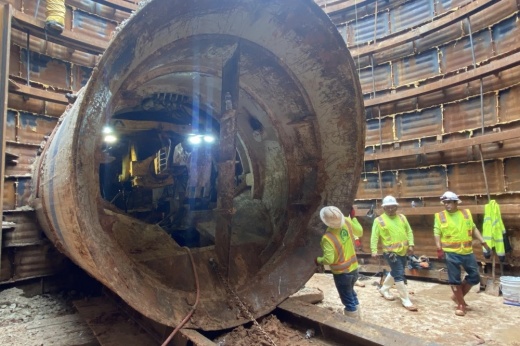What’s happening
With a regional requirement to reduce groundwater consumption, the West Harris County Regional Water Authority partnered with the North Fort Bend Water Authority in 2011 to construct the more than $1.2 billion Surface Water Supply Project. The project will bring surface water from Lake Houston west across the Greater Houston area with over 55 miles of pipeline.
The update
The Kinder Morgan Segment of the project from Fry Road to I-10/Grand Parkway is set to begin mid-2024 and will primarily bring the water to the Katy area. Construction on this segment is set to be completed by 2026, WHCRWA President Eric Hansen said in an email to Community Impact.
“Residents receiving surface water are unlikely to notice a change from the groundwater they received previously, and the WHCRWA works with its wholesale customers’ water plant operators to ensure that they will be prepared for this new water source as it starts to be delivered to city and [municipal utility districts] water plants,” Hansen said.
As residents begin to use more surface water, they should experience a reduction in the rate of land subsidence, which can reduce the chances of flooding, WHCRWA officials said. Subsidence is the gradual sinking of land caused by the removal of groundwater from aquifers, causing settling, according to the Surface Water Supply Project website.
Looking back
Both the WHCRWA and the NFBWA were formed in the early 2000s to help fight subsidence. According to the Surface Water Supply Project website, the partnership between the two began to meet the Harris-Galveston Subsidence District and Fort Bend Subsidence District’s groundwater reduction requirements, which regulate groundwater and monitor subsidence in the Houston region.
The entities require water suppliers to reduce groundwater pumpage based on the rate of subsidence in their area, Community Impact reported. This spurred the need for more surface water projects regionally.
Since construction on the pipeline began in 2020, the Surface Water Supply Project has completed checkpoints, including Segment 3, and is nearing completion on segments C1 and C2. Construction has also been started for the central pump station and repump station, Hansen said.
What they’re saying
Officials with both the city of Katy and Fulshear are preparing for when they will begin receiving more surface water in the area, city officials said.
Residents may notice a change in the taste of water as the transition begins, Katy City Engineer David Kasper said.
“The surface water may have a slightly different taste than the city's well water to some people. Others may not notice the difference,” Kasper said. “The taste is expected to be very similar to the water of the city of Houston because the supply will come from the same water treatment plant source.”
Within the city of Fulshear, residents may begin to notice less of a chlorine odor and taste, Public Works Director Sharon Valiante said.
“The city is working with the North Fort Bend Water Authority to coordinate the necessary equipment needed to receive the surface water to begin treating it with a chloramine disinfection,” Valiante said. “Chloramine disinfection is an industrywide process of treating surface water. In the U.S., many water systems have used chloramination for several decades.”
The WHCRWA is studying how future water rates will be affected.
What’s next
Upon meeting the district’s 60% groundwater reduction requirement in 2025, officials said the WHCRWA will evaluate internal water line routes to serve additional areas as they move forward to meet the 2035 required 80% reduction.





